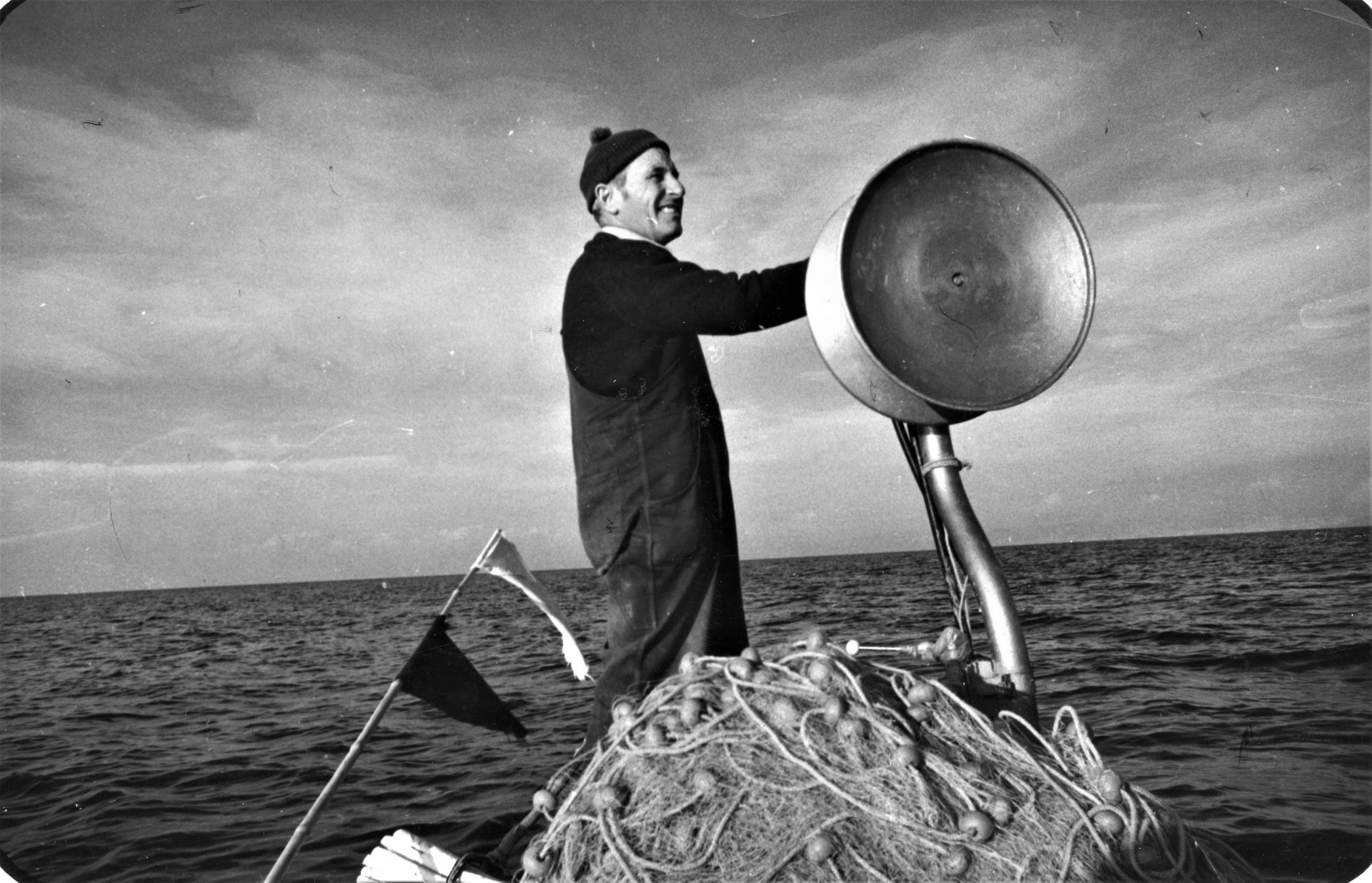Segio Perentin was born in 1927 in the coastal town of Izola (present Slovenia). In 1933, he moved to the nearby town of Piran with his mother and brother, while his father stayed behind to continue to work on the family farm. ‘My mother decided this because of frequent family quarrels. It was an extended family, so it was hard to live together. She found work in Piran doing menial jobs in restaurants and brought up the children by herself. We lived at Punta in Piran, where most of the fisherfolk resided at that time. During the school holidays, an old fisherman took me out to the sea. He taught me how to row and cast nets.’
At the age of twelve, after finishing five years of primary school, Segio started to work regularly on fishing boats. At first, he was paid in kind with fish, and he later received one quarter of the catch in cash. After World War Two, he obtained a fishing licence in Trieste to work on larger fishing boats called toneras, which fished in Norway and elsewhere. At first, he was thinking of going abroad to fish, but he later changed his mind.
‘I thought, why would I go abroad to fish if I can do the same at home. The times have also changed. A lot of Italian-speaking fishermen moved to Italy due to the political situation. My mother, father, brother and sister; they all left for Italy. I was left alone. Together with fishermen who also chose to stay in Yugoslavia after the Second World War, we formed a new co-operative, supported by the Yugoslav state. We worked for the industry and covered the entire Yugoslav market. The whole of Yugoslavia ate our fish. We had insurance, medical insurance, and a retirement fund. The co-operative paid for our salaries and these other benefits. We didn’t own boats; we worked on boats owned by factories or the co-operative. Slowly, other fishermen from other parts of Slovenia and Dalmatia joined us too.’
Sergio married in 1958. In 1959, they had a baby girl, but in 1971 his wife died, and he looked after his daughter by himself. In 1980, he retired but continued to fish on his own. A Dalmatian carpenter built him a smaller boat of around five metres long called a caiccio, and Sergio bought a boat engine in Trieste. With 200 metres of nets, he caught fish for his subsistence and some for sale, thereby adding to his small pension. He was very familiar with the periodical movement of fish in the North Adriatic as he learned about this as a young boy long before the arrival of sonar or other new electronic devices. In 2007, Sergio sold his caiccio when he lost strength in his hands. Today he lives by himself in Piran and is known as the oldest Piran fisherman. He likes to take strolls and have chats with passers-by. He is often visited by researchers, journalists, museum workers and students with whom he readily shares his memories and knowledge. ‘Factories in Slovenia closed down, and it hurts. We had factories here, on the coast, but we moved them inland, away from their natural and historical place. Now there is a void. They removed memories of so many people. Two thousand people used to work there, including my mother, and the conditions were hard. Okay, things change, evolve, but still.’
Ethnographic documentation Martina Bofulin and Aleksej Kalc
